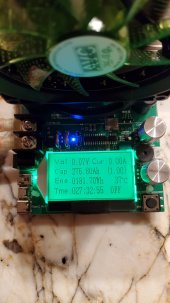What I think you need to do is isolate the battery system from the trailer and test to make sure the battery is performing correctly on it's own. If it is not, we need to trace that first. If it is working correctly, then we have to trace what is going on in the trailer. I would start with just the battery cells and BMS and nothing else connected. Connect just the charger and bring the battery to your full charge voltage. For a 4S LFP, I would suggest bringing it to 4 x 3.4 = 13.6 volts if you can adjust the absorb voltage on your charger. Once it is charge, what does the BMS read? If it did not go to full, is it at least 85% or above? If not, do the capacity reset. This should be your new full charge setting. Disconnect the charger, so it is just the battery and the BMS. The BMS will pull a small amount of current, but it should not be enough to pull the battery down for many days. Before my inverter/charger arrived, my battery bank sat a month with the BMS powered, and it only dropped about 1-2% out of my 360 amp hours. So let that sit overnight and see if the voltages drop. LFP cells will settle down a little, so you may see some drop, but the capacity remaining should not change much. If this is looking good, apply a small load. What do you have available? Would it be hard to just run a wire to the LED lights that you said pull 2 amps? That would be a good start. Enough to show on the BMS current meter, but not so much to kill it quick. Running the 2 amp of LEDs, the capacity meter should drop 1 amp hour every 30 minutes. In 84 minutes, it would drop 1%. Yes, 1.4 hours. At 2 amps, it would take 70 hours to use 50% of a 280 AH battery bank. That is 2.9 days of your 2 amp LED lighting. And that is just 50% of the capacity. So you should be able to just check it every few hours with the LEDs on and see if the BMS is even close to these numbers. Just check it every 3 hours or so and see if it is losing about 3%. If it is going faster, you have a problem.




